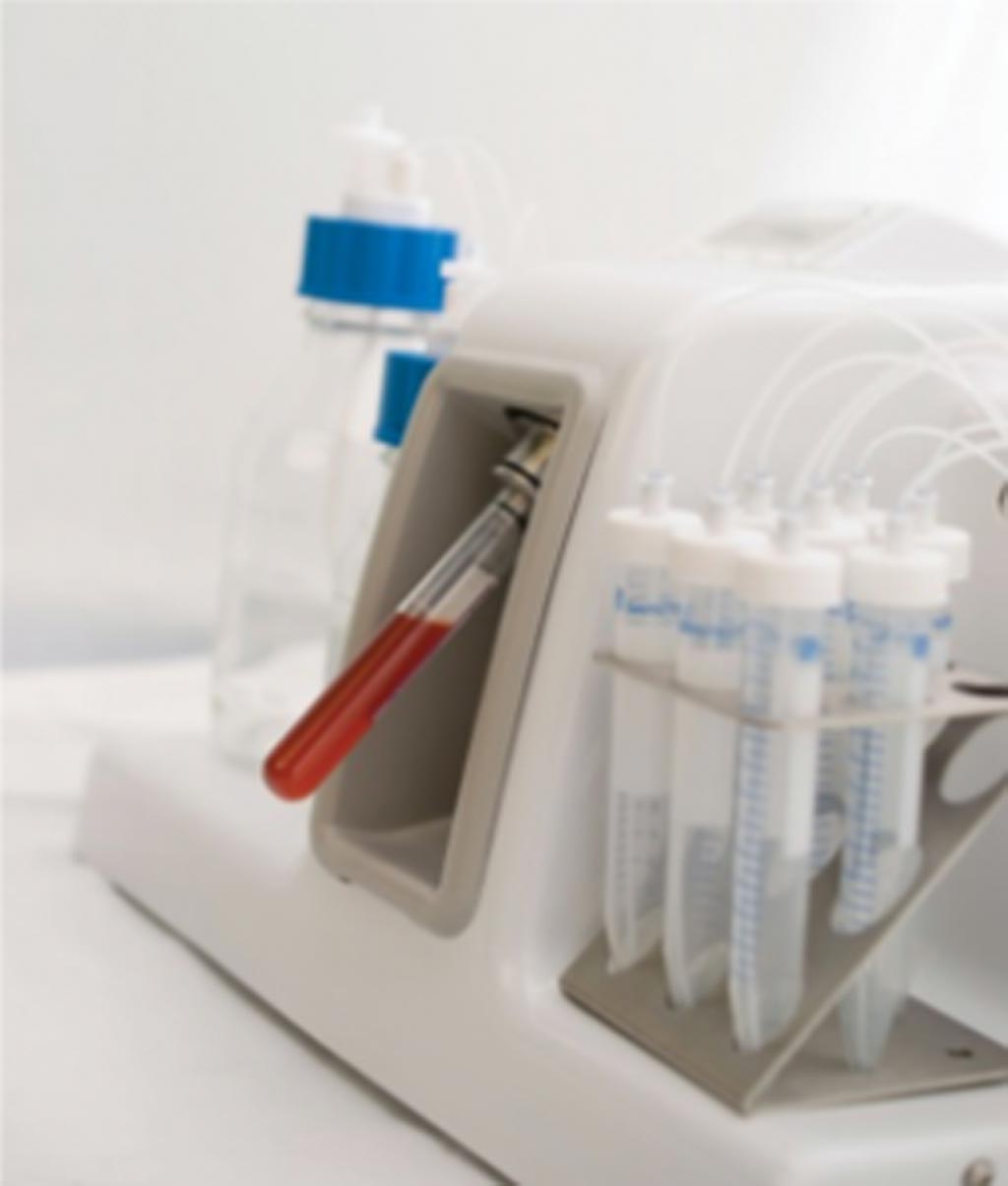Automated Collection of CTCs Improves Prostate Cancer Diagnosis
By LabMedica International staff writers
Posted on 16 Sep 2019
A recent paper described the benefits of circulating tumor cell (CTC) analysis for improving the diagnosis of aggressive prostate cancer beyond currently used PSA (prostate specific antigen) measurement, biopsy and/or MRI imagery.Posted on 16 Sep 2019
PSA testing can result in unnecessary biopsies and over-diagnosis with consequent over-treatment. Tissue biopsy is an invasive procedure, associated with significant risk of complications. More accurate non- or minimum-invasive diagnostic approaches are required to avoid unnecessary prostate biopsy and over-diagnosis.

Image: The Parsortix system for collection of circulating tumor cells (Photo courtesy of ANGLE plc).
Towards this end, investigators at Queen Mary University of London (United Kingdom) evaluated the potential of using circulating tumor cell analysis for prostate cancer diagnosis, particularly in predicting the presence of clinically significant prostate tumors in patients prior to biopsy.
The investigators used the ANGLE plc (Surrey, United Kingdom) Parsortix system to capture and analyze CTCs from 98 pre-biopsy and 155 newly diagnosed prostate cancer patients.
The Parsortix liquid biopsy process requires a blood sample - typically 10 milliliters in an EDTA vacutainer tube. As no pre-processing is required, the tube is simply attached to the Parsortix instrument. A Parsortix filtration cassette is inserted into the instrument and the system is primed for use. The instrument automatically passes the blood through the filtration cassette, and CTCs are caught in the cassette due to their larger size and lower compressibility as compared to other blood components.
Once trapped in the cassette, CTCs may be automatically stained with selected antibodies, which enables their identification and characterization. In addition, CTCs may be enumerated by placing the filtration cassette under a fluorescent microscope. Alternatively, cells may be eluted from the cassette and recovered in buffer solution for genomic analysis.
Results obtained with the Parsortix system indicated that the appearance of CTCs in pre-biopsy blood samples was indicative of the presence of aggressive prostate cancer. When the CTC tests results were combined with those of the current PSA test, the presence of aggressive prostate cancer in subsequent biopsies was predicted with accuracy of over 90%, better than any previously reported biomarkers.
Senior author Dr. Yong-Jie Lu, professor of molecular oncology at Queen Mary University of London said, "The current prostate cancer test often leads to unnecessary invasive biopsies and over-diagnosis and over treatment of many men, causing significant harm to patients and a waste of valuable healthcare resources. There is clearly a need for better selection of patients to undergo the biopsy procedure. Testing for circulating tumor cells is efficient, non-invasive, and potentially accurate, and we have now demonstrated its potential to improve the current standard of care. By combining the new CTC analysis with the current PSA test, we were able to detect prostate cancer with the highest level of accuracy ever seen in any biomarker test, which could spare many patients unnecessary biopsies. This could lead to a paradigm shift in the way we diagnose prostate cancer."
The study was published in the August 7, 2019, online edition of the Journal of Urology.
Related Links:
Queen Mary University of London
ANGLE plc













